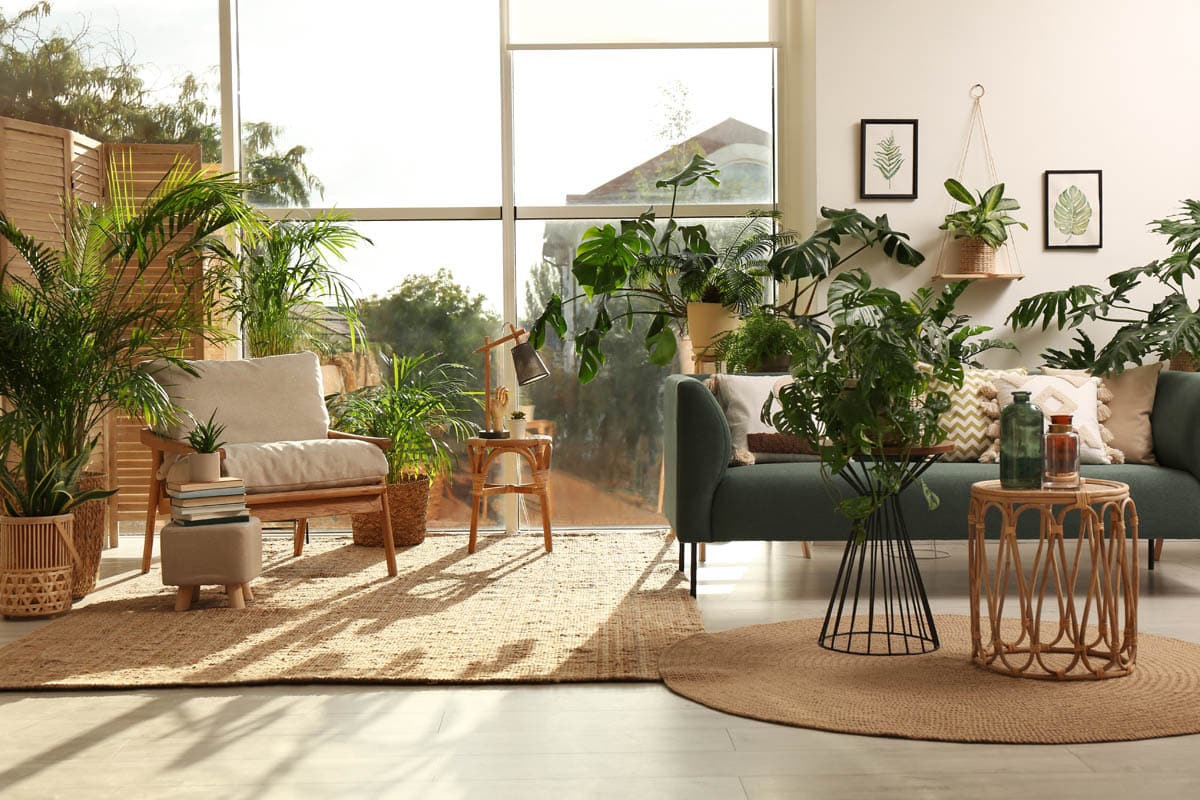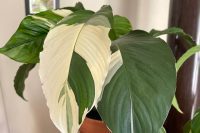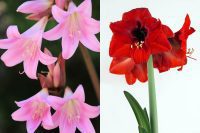What is a houseplant?
Also referred to as an indoor or pot plant, a houseplant is any plant grown inside a house or office. These plants are usually evergreen (don’t lose their leaves in winter) and have attractive or decorative foliage. Some species of flowering plants such as African violet or cyclamen can also be grown as houseplants, but are typically stored in greenhouses, planted outside or discarded when they have finished flowering.
One of the earliest examples of houseplants dates back to 600 B.C. when King Nebuchadnezzar II is said to have created the Gardens of Babylon (Iraq) for his Persian-born wife Queen Amytis who missed the lush greenery of her homeland. Olive, quince, pistachio, pear, date and fig trees are said to have been grown, however, the exact location still remains a mystery.
There are documented accounts from Ancient Egypt, Greece and Rome of plants grown in terracotta and marble pots by wealthy citizens around 500 – 400 B.C.
The popularity of houseplants declined after the fall of the Western Roman Empire in the 5th-century common era. By the start of the Renaissance era their popularity increased as European countries colonised the Americas, Africa, Asia and Oceania and brought back specimens of exotic plants. Plants showcased the wealth of individuals who were able to grow exotic plants in orangeries.
Benefits of houseplants

There are many benefits to keeping plants in the home. Most of us keep houseplants because they bring nature indoors, add colour and interest, brighten up the home and can fill empty corners or shelves.
- Improves air quality: A 1989 NASA study found plants absorb carbon dioxide, release oxygen, as well as remove volatile organic pollutants (benzene, formaldehyde, and trichloroethylene).
- Faster recovery from illness: A 2002 study by Roger S. Ulrich of the Center for Health Systems and Design, Texas A and M University found gardens in hospitals improved patient outcomes, with a shorter recovery period and less pain medication.
- Lowering stress: One small study involving 24 young adult males found that interaction with indoor plants compared to performing a computer task reduced physiological and psychological stress compared to mental work by suppressing sympathetic nervous system activity and diastolic blood pressure and promoting comfortable feelings.
- Hobbies: Some people collect houseplants, which provides the opportunity to learn about plant care and propagation.
- Adding interest to the home: The addition of houseplants can add an element of softness in contrast to hard furnishings.
Can houseplants live outside?
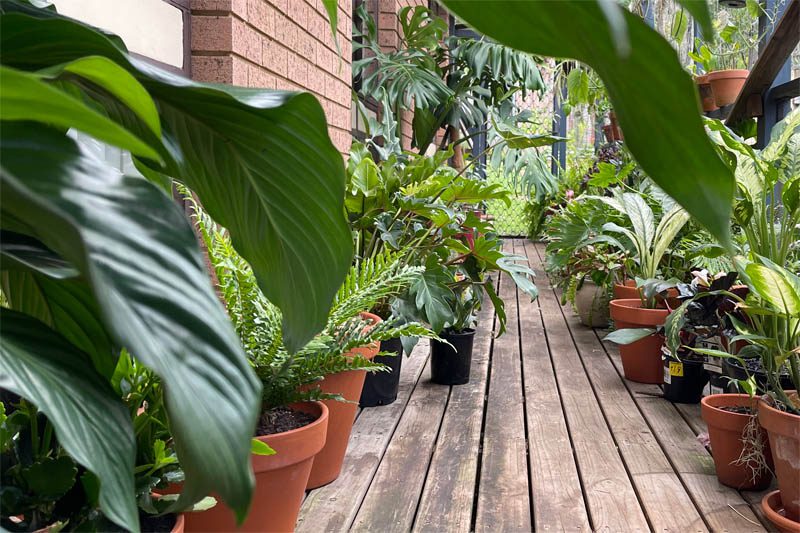
Obviously, all plants evolved outside, and any houseplant can live outside in the right conditions. Most common houseplants are sub-tropical or tropical, and will only survive in warm, humid environments. Here in Australia, we see many houseplants that have somehow escaped (via seeds, or been dumped) growing in the wild, or along grass verges.
The image above is our cat run, which I have recently begun to convert into a tropical oasis for the cats (and humans to enjoy). It features peace lily (Spathiphillum sp.), Swiss cheese plant (Monstera deliciosa), Bird’s nest fern (Asplenium nidus), Spanish moss (Tillandsia usneoides) as well as various Alocasia, Dieffenbachia and orchids.
Below is a philodendron that has somehow escaped cultivation and is growing on a grass verge, with native bushland behind it. My dog is the size of a small labrador and is completely overshadowed by the enormous philodendron. Under the right conditions, houseplants have the potential to become highly invasive and displace native plant species.
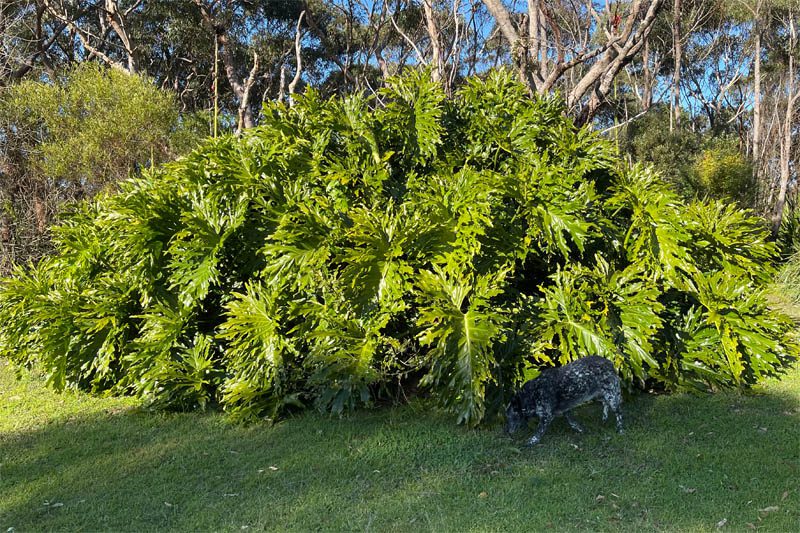
Common species of houseplant
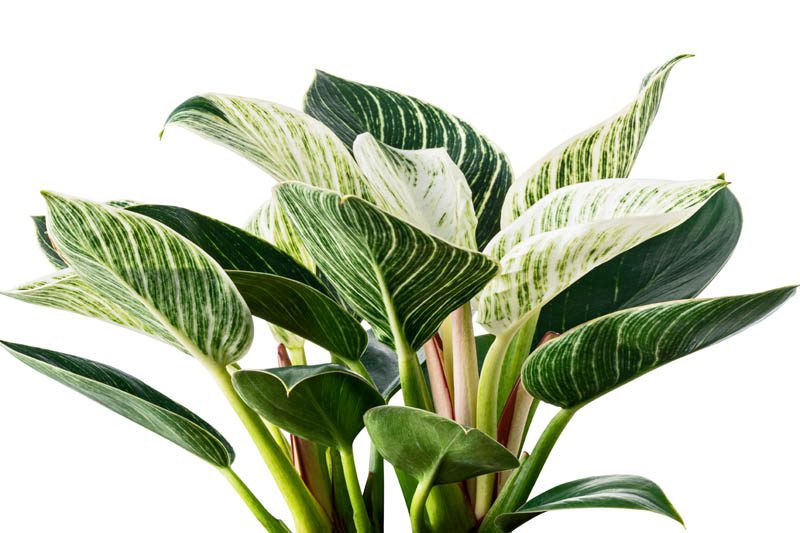
- Swiss cheese plant
- Swiss cheese vine
- Philodendron
- Dieffenbachia
- Alocasia
- Snake plant
- Fiddle leaf fig
- Rubber plant
- Peace lily
- African violet
- Cast iron plant
- Spider plant
- Croton
- Anthurium
- Pothos
- Ponytail palm
Frequently asked questions
Can you sleep with houseplants in your bedroom?
Plants absorb carbon dioxide from the air and release oxygen as a byproduct in a process known as photosynthesis. This process occurs primarily during the day when sunlight is available to power the reaction. At night, the process reverses, and plants release some of the carbon dioxides they stored during the day as part of respiration. The amount of carbon dioxide released by plants at night is generally not enough to pose a risk to human health. In fact, having plants indoors can actually help improve air quality by reducing the concentration of pollutants and increasing oxygen levels. The benefits of plants in the home far outweigh any potential risks.
How many houseplants are too many?
There is no right or wrong answer to this. The answer depends on how much time and space you have as well as the type of plants you would like to keep. I have over 20 houseplants, most of which sit on the furniture, or shelving, so don’t take up floor space. At a guess, I spend between 1 – 2 hours per week caring for them. In winter their need for water and fertilisation drops, therefore less time is required.
Bear in mind that the plant isn’t the only cost, you will need a decorative pot and tray (not essential, but they look nicer than the plastic black pots they are sold in), a premium potting mix and good quality fertiliser.
As long as you have the time, the space, and the interest in caring for your plants, there is no limit to the number of plants you can have. Make sure there is enough space to freely and safely move around the house.
What is the best houseplant for oxygen?
In 1989, NASA and the Associated Landscape Contractors of America (ALCA) ran a NASA Clean Air Study to evaluate the ability of a number of plants to purify the air in sealed environments such as space stations. Plants were found to absorb carbon dioxide, release oxygen, as well as remove volatile organic pollutants (benzene, formaldehyde, and trichloroethylene).
The following plants were found to be the most effective.
- Variegated snake plant (Sansevieria trifasciata var laurentii)
- English ivy (Hedera helix)
- Peace lily (Spathiphyllum ‘Mauna Loa’)
- Chinese evergreen (Aglaonema modestum)
- Bamboo palm (Chamaedorea seifrizii)
- Red-edged dracaena (Dracaena marginata)
- Cornstalk dracaena, mass cane/corn cane (Dracaena fragrans ‘Massangeana’)
- Weeping fig (Ficus benjamina)
- Barberton daisy, gerbera daisy (Gerbera jamesonii)
- Florist’s chrysanthemum, pot mum (Chrysanthemum morifolium)
- Dracaena Janet Craig (Dracaena deremensis ‘Janet Craig‘)
- Warneckei (Dracaena deremensis ‘Warneckei‘)
What are the easiest houseplants to grow?

Some of the easiest-to-grow houseplants include:
- Cast iron plant
- Peace lily
- Snake plant
- Swiss cheese plant
- Swiss cheese vine
- Chinese evergreen
- Dieffenbachia
- Spider plant
- Cacti
- Peperomia
- Pothos
- Ivy
- Yucca
- Air plant
- Rubber plant
- Calathea
- Ponytail palm
- ZZ plant
- Umbrella tree
Why do houseplants make me happy?
Caring for a houseplant and witnessing a new leaf or flower unfurl can be a deeply gratifying experience. Whether it’s collecting rare species, propagating cuttings to share with friends and family, or simply enjoying the beauty of plants in the home, there’s something undeniably alluring about bringing a piece of the outdoors inside. Houseplants add a touch of life and warmth to any space, creating a sense of tranquillity and well-being. It’s no wonder why so many people find joy in nurturing these living beings and cultivating a deeper connection with the natural world.
Julia is a writer and landscape consultant from Wollongong with a love of horticulture. She had been an avid gardener for over 30 years, collects rare variegated plants and is a home orchardist. Julia is passionate about learning and sharing her knowledge of plant propagation and plant toxicology. Whether it’s giving advice on landscape projects or sharing tips on growing, Julia enjoys helping people make their gardens flourish.
